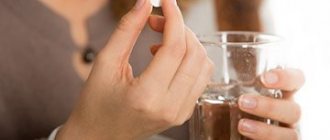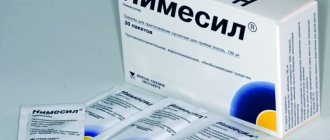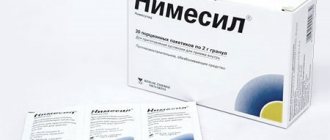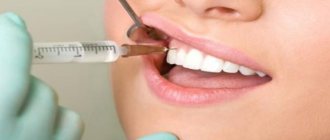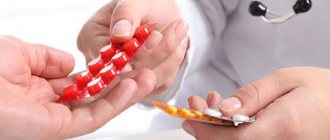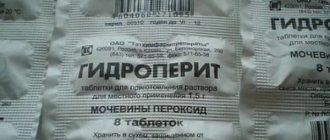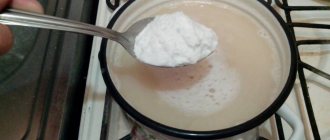From this article you will learn:
- the best remedy for teething in children,
- Will homeopathy be effective?
- When can you use Panadol or Nurofen?
To relieve symptoms during the eruption of the first teeth, not only special pain-relieving gels for gums, but also systemic drugs can be used. The latter also include a group of homeopathic medications, among which the most popular are oral medications – “Dantinorm Baby” and “Dentokind”, as well as Viburkol suppositories for rectal use.
The big advantage of such drugs is that they not only soothe the gums during teething, but also help cope with the baby’s nervousness and help restore healthy sleep. In addition to homeopathic remedies, more serious drugs can be used, such as Panadol and Nurofen (based on paracetamol and ibuprofen, respectively). They are used from 3 months, and the optimal indication for their use is the presence of a child with fever or severe pain due to teething.
What does the eruption of baby teeth look like?
Thus, depending on the severity of the symptoms, you can - 1) either use an anesthetic gel for local use in the oral cavity (they are also available only with herbal components), 2) use one of the systemic drugs, 3) or combine an anesthetic gel with the drug for oral or rectal use.
As you will see below, the latter option makes sense, because... Systemic homeopathic preparations, although they do not have a pronounced analgesic or anti-inflammatory effect, nevertheless, they can reduce nervousness and normalize the child’s sleep (due to the inclusion of herbal components with a sedative effect). In addition, one of these drugs can, among other things, reduce salivation in an infant, preventing choking on saliva and drooling from the mouth.
Directions for use and doses
Inside. Take one dose 2-3 times a day in between feedings for 3 days.
The method for opening the package and taking the drug is presented in the figures.
Figure 1. Open the sachet.
Figure 2. Separate one PE container.
Figure 3. Open the PE container by turning the head.
Figure 4. Sitting the child. Lightly press the container to squeeze its contents into the child's mouth.
Place the remaining containers in a sachet and close it by folding over the open side.
Dantinorm Baby - reviews for teething
Dantinorm Baby is a homeopathic preparation of plant origin, which is produced in the form of an oral solution (the package contains 10 sachets of 1 ml each). The drug is produced by the French company, which is better known for its homeopathic drug from duck liver - called “Ocillococcinum”. The cost of Dantinorm Baby is from 400 rubles.
Composition of active ingredients (per 1 dose) –
- Chamomilla vulgaris (wild chamomile),
- Phytolacca decandra (American grape leaves),
- Rheum officinale (rhubarb).
The drug can be used from birth. Chamomile extract has a weak anti-inflammatory, weak antiseptic, and weak analgesic effect. American grape leaf extract in small doses acts as a sedative and also has a mild laxative and antibacterial effect. Rhubarb extract – has a weak anti-inflammatory effect, improves appetite.
Reviews of Dantinorm Baby for teething in a child indicate that this drug is effective only when the symptoms are mild. If your child's main symptoms are nervousness, poor sleep, lack of appetite, then this drug will be effective. However, if the child’s main symptoms are pain and inflammation of the gums at the site of eruption, fever, then this drug will not be able to significantly improve the situation.
Other medicines for teething -
As we said above, homeopathic medicines can only relieve moderately severe symptoms, and they do not have a pronounced analgesic, antipyretic or anti-inflammatory effect.
Therefore, in some cases, special anesthetic gels (for local use in the oral cavity) can be used in parallel. The gel may contain either only herbal components, or their combination with the mild anesthetic Lidocaine. But there are situations when all this is not enough. For example, your child may have a fever (24stoma.ru). In general, elevated temperature during teething occurs very rarely, and most often its cause is either a concomitant acute respiratory infection or herpetic stomatitis of the oral mucosa. Also, in some cases, the child may experience significant pain and inflammation of the gums. For these cases, the following drugs are available.
1) Children's Panadol for teething -
Children's Panadol contains paracetamol as an active component; accordingly, this drug will have a pronounced antipyretic and analgesic effect. There are several forms of release. Panadol suppositories with a dosage of 125 mg can be used from 1 year, and with a dosage of 250 mg - in children from 3 years. However, the most convenient form of release will be “Panadol Baby” (in the form of a suspension), which can be used in children from 3 months to 12 years.
Children's Panadol in suspension form –
Biodentine is a bioactive material for preserving pulp vitality during restoration
Preservation of pulp vitality in cases of treatment of deep caries remains the main factor for a good prognosis after restorative therapy. This issue becomes especially important when these teeth are planned as a support for a prosthesis. Previous studies have shown that loss of pulp vitality is one of the largest complications and is also associated with poor performance by the prosthodontist. In addition, endodontically treated teeth are much more likely to be susceptible to mechanical (root fracture) or biological (periapical pathology) damage, which in turn reduces the service life of orthopedic structures.
Current standards for treating deep caries involve direct or indirect pulp capping with calcium hydroxide, followed by a GIC or modified GIC liner, followed by restoration with a composite filling or composite/ceramic inlay. In addition, if the tooth is intended to support a structure, calcium hydroxide is coated with a suitable formative material, such as silver-reinforced GIC. Although calcium hydroxide coating is considered the gold standard for this treatment, this method also has some disadvantages, mainly associated with poor bonding to dentin, low mechanical strength and chemical instability. The latter is considered to be the main cause of complications from the pulp, which often occur during the first two years after coating, which is associated with the gradual resorption of the material under the composite filling. GIC, on the other hand, has chemical and mechanical stability, dentin adhesive properties and biocompatibility, which are considered to be significant advantages. However, glass ionomers do not have the necessary dentin-forming effect. And lastly, any cements and composites, when applied directly to the pulp chamber, can cause inflammation of the pulp, and then irreversible pulpitis.
For the reasons listed above, there has long been a need in dentistry to create a new bioactive spacer that can ensure long-term preservation of pulp vitality after restorative treatment of carious lesions. Recently, calcium silicate cement (Biodentine, Septodont) has been introduced, which can act as a dentin substitute for direct and indirect pulp capping. The main advantages of this material are the ability to firmly bind to dentin, antibacterial properties, and mechanical strength similar to dentin. In this article we present to your attention two clinical cases of the use of Biodentine for deep caries in a patient who had previously experienced pulp complications after a standard protocol for the treatment of deep caries.
Clinical case 1
A 38-year-old woman came to the clinic with complaints of sensitivity of the teeth of the upper jaw on the right after drinking cold and hot drinks. Diagnostic examination revealed secondary caries lesions under existing amalgam restorations in teeth 14 (distal) and 15 (approximal) (Figure 1). Both tests responded positively to thermometry, percussion was negative. The patient is informed about the need to treat the carious lesion and replace the amalgam restoration.
Figure 1: Pre-treatment radiograph showing recurrent caries under existing amalgam restoration in teeth nos. 14 and 15
After consent was obtained, local anesthesia was administered (Articaine HCL 4% with 1:200,000 epinephrine, Ubistezin, 3M ESPE), the amalgam was removed, and the carious dentin was completely cleaned (Photo 2). In the proximal area of tooth #15, there is a thin layer of remaining dentin separating the pulp chamber (Figure 3). Biodentine (Septodont) was chosen as a temporary filling material (Photo 4,5). The material was used according to the manufacturer's instructions. The decision to use Biodentine was made due to complications that had previously arisen after coating the bottom of the carious cavity with calcium hydroxide in teeth 24 and 25, which two months later led to pulpitis. Biodentine is left for 6 weeks to reduce sensitivity but still maintain vitality (Photo 6). For the next 6 weeks, the patient did not report any symptoms, the vital test was positive, percussion was negative. The Biodentine is then partially removed, leaving some of it as a spacer (Photo 7). Both teeth were restored with indirect composite restorations. After the final preparation of Biodentine and tooth structure, an impression is made with a single-phase polyester material (Impregum, 3M ESPE) (Photos 8 and 9). The teeth were restored with composite inlays (SR Adoro, Ivoclar Vivadent), which were cemented with dual-curing cement (Variolink II, Ivoclar Vivadent) (Photo 10).
Photo 2: X-ray after removal of carious tissue, showing the proximity of the cavity to the pulp of the tooth, especially in tooth No. 15.
Photo 3: Clinical picture after removal of a carious lesion.
Photo 4: Biodentine is placed in the cavities of both teeth and left for 6 weeks. The material has a smooth surface after curing.
Photo 5: X-ray after placement of Biodentine.
Photo 6: Biodentine after 6 weeks. The marginal fit was not broken in both fillings, no damage was detected. There is a slight change in the color of the fillings.
Photo 7: Biodentine is partially removed and left to the natural dentin margins.
Photo 8: Final impression with single-phase polyester material.
Photo 9: Model for making inlays using a laboratory composite.
Photo 10: Placement of inlays and their fixation with dual-curing cement.
At follow-up examinations 6 months and 1 year after treatment (Photo 11), both teeth were asymptomatic, the vitality test was positive, percussion was negative. X-ray examination revealed no periapical pathology (Figure 11B).
Photo 11: Radiographs, 6 months and 1 year after treatment.
Clinical case 2
A 28-year-old woman presented to the clinic after a fracture of her left upper first molar (#26) occurred while chewing (Figure 12). Clinical and radiological examination revealed deep caries in both molars (#26 and 27), located very close to the pulp chamber (Figure 13). Tooth No. 26 was treated earlier, about 2 years ago.
Photo 12: Before treatment. Fracture of the crown of tooth 26. Deep caries 26 and 27 close to the pulp chamber.
Photo 13: X-ray before treatment.
Clinical examination also showed vitality of both teeth and negative percussion. The patient did not report any symptoms. However, the woman mentioned that two other lower molars (36 and 46) had previously been treated endodontically due to asymptomatic caries, the diagnosis of which did not occur until the pulp chamber itself was affected. The patient is warned about the need for treatment of the carious process and, possibly, endodontic intervention. After obtaining consent, local anesthesia was administered (Articaine HCL 4% with 1:200,000 adrenaline, Ubistezin, 3M ESPE), and a rubber dam was applied in case of opening of the pulp chamber. After excavation of carious dentin, an iatrogenic opening of the pulp chamber was performed in 26, and a thin plate of dentin was preserved in 27. (Photo 14, 15). The clinically exposed pulp in 26 remained vital, no heavy bleeding was observed, so the decision was made to leave the tooth vital and perform direct coating. Bleeding control and disinfection were carried out with sodium hypochlorite. Biodentine (Septodont) was chosen as the temporary material for both teeth (Photo 16). The material was used according to the manufacturer's instructions. Biodentine is left in the cavity for 6 weeks, after which a permanent restoration is planned (Figure 17). During this period of time, the teeth remained asymptomatic, however, retained vitality, and percussion remained negative. In tooth 27, Biodentine was left as a base lining, on top of which a direct composite restoration (Tetric EvoCeram, Ivoclar-Vivadent) was installed using a standard protocol (phosphoric acid etching, application of one-component adhesive) (Photos 18 and 19). Tooth 26 was prepared for a metal-ceramic crown due to extensive loss of hard tissue. Biodentine in this situation is left as a base material (Photo 18). The metal-ceramic crown is fixed to the GIC (Fuji I, GC) (Photo 19). At a follow-up examination 6 months after treatment, both teeth were asymptomatic, vitality was preserved, percussion was negative. X-ray examination did not reveal any periapical pathology (Photo 20).
Photo 14: After removing carious dentin, the cavity of tooth 26 was opened, a thin layer of dentin was preserved in the distal zone, and in tooth 27 the bottom was also represented by a thin plate of dentin.
Photo 15: X-ray after removal of carious tissue.
Photo 16: Biodentine left for 6 weeks. A rubber dam was used to prevent pulp contamination.
Photo 17: Biodentine after 6 weeks. The marginal fit is preserved in both fillings, the integrity is not compromised.
Photo 18: In tooth 27, Biodentine was left as a lining and the tooth was restored with a composite material (Tetric EvoCeram, Ivoclar Vivadent). Tooth 26 was prepared for a crown, leaving Biodentine as a base.
Photo 19: Final view of composite restoration 27 and metal-ceramic crown 26.
Photo 20: X-ray 6 months after treatment. No signs of periapical pathology were identified.
Discussion
Biodentine is a bioactive material consisting of tricalcium silicate and a radiopaque phase of zirocnium oxide. Calcium silicate cement is capable of releasing a large amount of calcium hydroxide ions during the curing process and for a long time after, which provide stimulating regenerative processes in the pulp. The formation of dentinal bridges when covering the pulp chamber with Biodentine has been proven histologically. Stimulation of regeneration and strong antibacterial properties are two critical factors for long-term preservation of tooth vitality. Antibacterial properties are provided by the alkaline reaction, and regeneration is provided by the release of the growth factor TGF-B1 from pulp cells. These factors attract undifferentiated pulp cells to the site of Biodentine application, which then turn into odontoblasts that secrete reparative dentin. Preserving tooth vitality is extremely important, especially if the teeth being restored are planned to be used as support for dentures.
Compared to conventional pulp capping materials such as calcium hydroxide, Biodentine exhibits much higher mechanical properties, approaching those of dentin itself (elastic modulus 22 GPa, compressive force 220 MPa and microhardness 60 VHN). This allows the material to be left under a composite filling and even used to restore the body of a vital tooth. Moreover, the ability of the material to create a strong connection with the underlying dentin is an important quality of the material for restoring the stump, as this will ensure the integrity of the structures and will not interfere with the long-term use of the installed crown or bridge. However, further research is needed to reveal the full properties of Biodentine when used in core formation, especially in teeth at the end of the dental arch, as they are subject to even higher masticatory pressure. Any difficulties during mixing can be overcome by strictly following the manufacturer's instructions. It is very important to add exactly 5 drops of liquid to the powder, and then mix at a speed of 4000-4200 rotations per minute for 30 seconds (Photo 21-23). If an insufficient amount of liquid is added, the material turns out to be dry and brittle, but if it is overdosed, the material spreads and is very difficult to introduce into the cavity. Properly mixed material has a creamy consistency (Photo 24). It is also very important to leave the material for approximately 12 minutes to harden before removing the matrix (Photo 25), otherwise the risk of chipping is very high. Biodentine should not come into contact with liquids when introduced into the cavity, therefore, if possible, the installation of a rubber dam is mandatory. The material should be introduced into the cavity with light pressure, avoiding excessive crushing, as this can damage the crystal structure and lead to poor marginal seal.
Photos 21, 22,23: The material should be used according to the manufacturer's instructions. It is important to add exactly 5 drops of liquid to the powder capsule and mix at a speed of 4000-4200 rotations per minute for 30 seconds.
Photo 24: Properly mixed material has a creamy consistency.
Photo 25: It is very important to allow the material to cure for 12-15 minutes before removing the matrix.
After curing, check the occlusal contacts using light pressure and articulating paper. The premature contacts are then removed using a curved hand tool or an excavator, but without the use of rotary tools.
Biodentine is a very promising material in cases of treatment of deep caries and the desire to maintain vital pulp. It has many useful qualities that can be highly valued in therapeutic and orthopedic dentistry. A randomized controlled trial showed improved performance in multiple areas compared with conventional pulp capping materials. Further studies are needed to obtain data on clinical use.
Authors: Athina Bakopoulou , Aristotle University of Thessaloniki (Greece) Lecturer, Department of Fixed Prosthesis and Implant Prosthodontics, School of Dentistry, Aristotle University of Thessaloniki, Greece Imad About , Aix-Marseille University (France)
Dentokind - reviews for teething
Dentokind is a complex homeopathic medicine, which is available in the form of lozenges (made in Germany). Its maximum daily dose is 12 tablets. The drug can be effective for moderate inflammation, a slight increase in temperature, and it also has a moderate sedative effect on the nervous system, helping to relieve anxiety. Recommended by the manufacturer for use from 0 to 6 years.
Composition of active ingredients (per 1 tablet) –
- Belladonna (belladonna),
- Chamomilla recutita (chamomile),
- Ferrum phosphoricum,
- Hepar sulfuris,
- Pulsatilla pratensis (meadow arrow).
Belladonna is a plant containing the alkaloid atropine, to which it owes its effect. In children, against the background of teething, salivation sharply increases, and the biggest advantage of this component is that it reduces the production of saliva in the child (allowing one to avoid choking on saliva and drooling from the mouth). Pharmaceutical chamomile has a moderate anti-inflammatory, analgesic and sedative effect.
The Ferrum phosphoricum component has a moderate anti-inflammatory effect and can also be effective with a slight increase in body temperature. The Hepar sulfuris component, due to its sulfur content, has a bactericidal/anti-inflammatory effect (as you remember, syphilis was treated in ancient times with mercury or sulfur). Meadow arrow – has a weak bactericidal, as well as a moderate analgesic and sedative effect.
Dentokind reviews for teething indicate that this drug copes with symptoms a little better than the previous one. As we said above, its big advantage is to reduce salivation and drooling in the child, as well as reduce nervousness. The drug can be effective for minor inflammation in the area of the erupting tooth and low temperature (about 37.5 degrees). However, it makes no sense to use Dentokind for more serious temperatures, as well as severe inflammation or pain.

